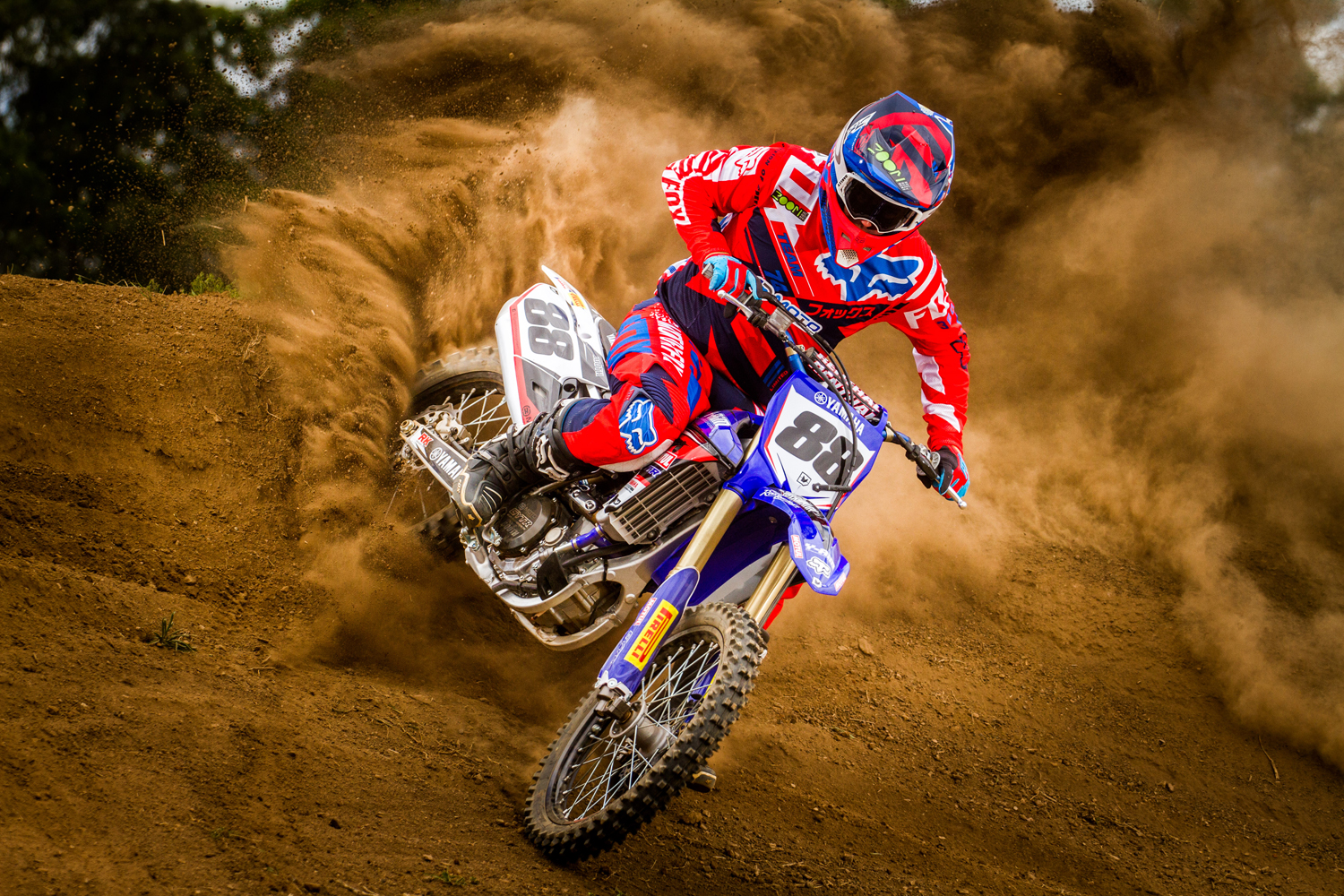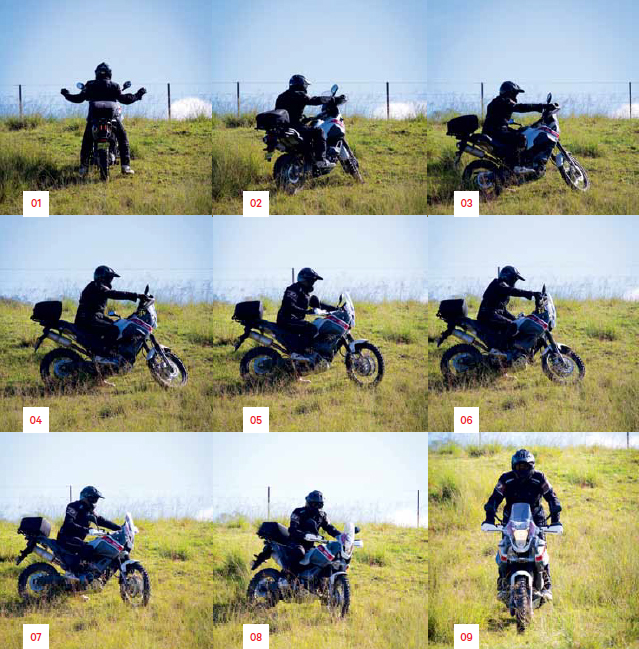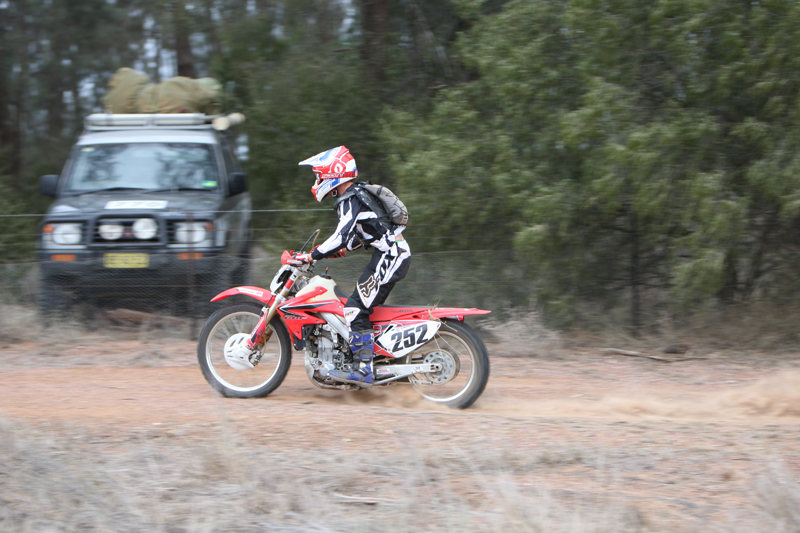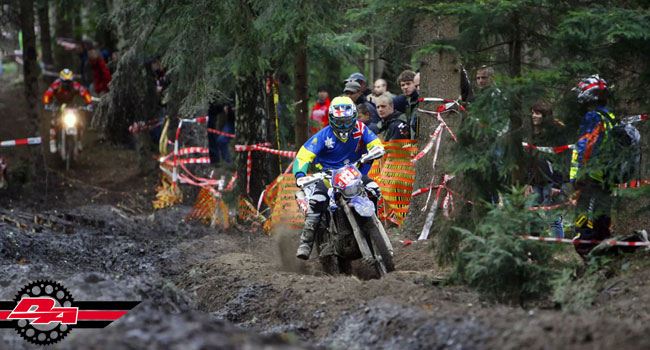
HILL RECOVERY
Getting stuck on a steep uphill doesn’t need to be cause for major panic. Use this technique to stay calm and in control
STORY SHANE BOOTH | PHOTOGRAPHY MATT BERNARD
KEEP CONTROL
If you’re climbing a steep hill and you feel things starting come to a halt, don’t wait until the bike finally loses all forward momentum and stops. That’s because it will invariably happen in the worst possible place where you can’t get your feet down — and may end in a crash.
You need to maintain total control so, when you feel momentum slipping away, look ahead and pick a place on the hill where you want to stop the bike. At this point you need to stall the bike on purpose — yep, that’s right, stall it.
The best way to do that is to make sure you’re seated ready to place your feet on the ground then remove your fingers from the clutch and use the front brake to stop the bike and cause a stall. Do NOT pull the clutch in.
You’ll now be sitting on your bike, stationary on the hill and with the compression of the engine holding you still.
This is where the fun begins: let’s turn it around.
STEP-BY-STEP HILL RECOVERY
1. Trust that the bike will hold with no brakes applied. You can see here that both feet are on the ground and both hands in the air. Assess the situation and choose which side you want to reverse the bike into.
2. Once you’ve chosen a direction, turn the handlebars to full lock on the side required, slide your weight to the high side and put your low-side foot on the footpeg. This removes any temptation to try to put it down, which obviously won’t work as the ground is a long way away.
3. Now to get the bike reversing. To do this, you very gently and very smoothly pull the clutch in slightly. You’ll feel the bike start to reverse. Don’t grab at the lever — otherwise you’ll take off backwards. This needs to be smooth and steady. Keep adjusting the position of your foot on the ground so the bike doesn’t get away from you, all the while keeping plenty of weight on that grounded foot. You want a very positive lean on the bike towards the uphill side.
4. As you reverse the bike it will get to a point where it’s sideways on the hill and won’t roll any further. This is probably where you’re most at risk of overbalancing to the low side of the hill. Be sure at all costs to keep the bike leaned well to the high side of the hill. Now it’s time to work the front of the bike around.
5. To get the front of the bike to come around so it’s pointing back down the hill, there is a very effective technique. Before we go into it, remember at this point you shouldn’t be applying any brakes, just relying on the compression of the engine to hold the bike from rolling anywhere.
6. Now, to get the front of the bike around you need to turn the steering lock to lock — literally go from steering stop to steering stop. As you do this the front wheel will start walking its way down the hill. This works at various rates depending on the surface and how steep the hill is. Sometimes it might take you six lock-to-lock movements; sometimes 26. This part can get a little physical so, if you need to, take a breather. Make sure you do.
7. By now the front wheel is starting to come around. A few more goes and it should be round far enough to head off.
8. At this point you can get the front wheel pointed directly down the hill, which is what you’re looking for. If you don’t get around far enough you’ll head off traversing the hill, which isn’t ideal. You want to be at a point where you’re heading straight back down; that will give you the best chance of gaining control quickly once you get going.
9. There are two ways to get moving: engine off or engine started. Engine off generally works well and leaves you with one less thing to worry about when you get moving. So, once you’re ready to go, give a big push off with the leg that’s on the ground and pull the clutch in at the same time. Go straight into the standing position if possible and control your speed with your brakes. You can leave the engine off all the way to the bottom or restart it once you’re rolling. To get moving with the engine running, you’ll need to apply the front brake then pull the clutch in and start your bike. Once it’s started it’s similar to the engine-off technique: just push off and ride away smoothly with the throttle and clutch.
EXTRA TIPS
* Be aware that the bike can sometimes slide sideways down the hill on loose or slippery surfaces. If you feel this happening, try not to panic; just make sure you have plenty of lean towards the high side of the hill. That way, the worst-case scenario is a slight tip over.
* Avoid going over to the low side at all costs — it’s not a nice way to crash and it can be avoided at this point.




